The outer perimeter of Edo Castle is dotted with historical landmarks that echo the footsteps of Tokugawa Ieyasu. Among them are Hirakawa Tenmangu Shrine, which preserves his legacy, Hanzomon Gate, named after the famed ninja leader Hattori Hanzo, and strategic defense points such as Sakuradamon Gate and Chidorigafuchi. Additionally, Onjuku Inari Shrine, a place of worship since the Edo period, stands as a testament to the city’s rich history and development.
Unlike Edo Castle, which served as the political and military hub of the shogunate, the outer perimeter provides glimpses into the daily lives of both samurai and commoners. As you explore these historic sites, you can imagine the vibrant castle town that once thrived here. In this article, we’ll introduce the must-see spots in the castle’s outer area.
Outer Perimeter
Hirakawa Tenmangu Shrine
⭐ Recommended Rating
Historical :☆☆
Visual value:☆☆☆
Experiential:☆☆
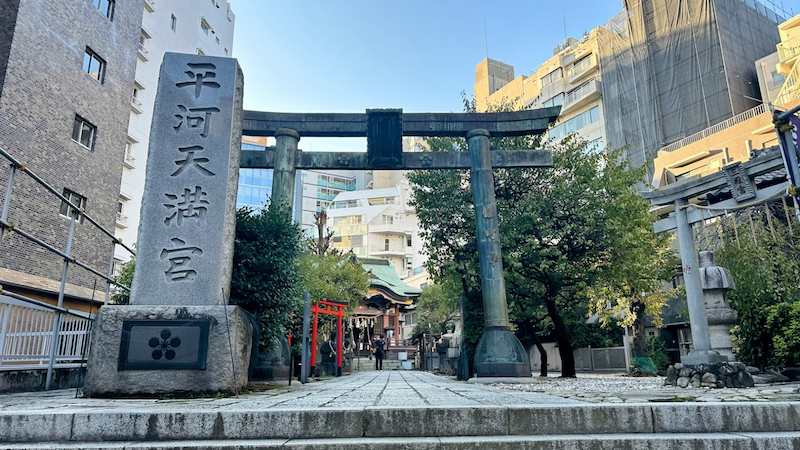
Hirakawa Tenmangu Shrine, located in Hirakawacho, Chiyoda City, Tokyo, is a historic shrine dedicated to Sugawara no Michizane, the deity of learning. The shrine also enshrines Honda Wake-no-Mikoto (Hachiman Shrine) and Tokugawa Ieyasu (Toshogu Shrine).
| Item | Content |
|---|---|
| Year Built | 1478 |
| Builder | Ōta Dōkan |
| Structure/Features | Shinto shrine dedicated to Sugawara no Michizane |
| Renovation/Restoration | Unknown |
| Current Status | Active shrine |
| Destruction/Damage | Unknown |
| Cultural Property Designation | Unknown |
| Remarks | – |
🗺 Address: 1-7-5 Hirakawacho, Chiyoda City, Tokyo
🚶 Access
Nearest station: Tokyo Metro Hanzomon Line, “Hanzomon Station,” Exit 1, approx. 3-minute walk (240m)
⏳ Estimated Visit Time
- Quick visit: About 5 minutes
- In-depth exploration: About 15 minutes
📍 Highlights
- Bronze Torii Gate: Donated by local residents in 1844 (Tenpo 15), this bronze torii is a designated cultural property of Chiyoda City.
- Nadeushi (Petting Bull): Five stone bulls are enshrined within the precincts, one of which is believed to grant good fortune when touched on the same area of the body as one’s own ailment.
- Enmusubi Ume (Plum Tree of Love): This plum tree, famous for producing two plums that grow close together, symbolizes romantic fulfillment.
📌 Trivia
- Unexpected Historical Significance: Hirakawa Tenmangu is one of Edo’s Three Great Tenjin Shrines and was a place of worship for the Kishu Tokugawa and Hikone Ii clans.
- A Hidden Gem: The shrine grounds feature cultural assets such as “Chikara Ishi” (Strength Stones) and “Komainu” (Guardian Dog Statues).
- Famous Visitors: The blind scholar Hanawa Hokiichi and the Dutch studies scholar Takano Choei were known to be devout worshippers.
Chidorigafuchi
⭐ Recommended Rating
Historical :☆☆
Visual value:☆☆☆
Experiential:☆☆

Chidorigafuchi, located in the northwest section of the Imperial Palace, is a scenic moat that derives its name from its shape, which resembles a plover bird (chidori). Initially, it was an artificial reservoir created during the early Edo period under Tokugawa Ieyasu’s orders for defense and water supply.
| Item | Content |
|---|---|
| Year Built | Early 17th century |
| Builder | Tokugawa Shogunate |
| Structure/Features | Moat surrounding the Imperial Palace |
| Renovation/Restoration | Unknown |
| Current Status | Public park and cherry blossom viewing spot |
| Destruction/Damage | Unknown |
| Cultural Property Designation | Unknown |
| Remarks | – |
🗺 Address: 2 Kudanminami, Chiyoda City, Tokyo
🚶 Access
Nearest station: Hanzomon Station on the Tokyo Metro Hanzomon Line, about 11 minutes on foot (about 750 meters) from Exit 5
⏳ Estimated Visit Time
- Quick visit: About 15 minutes
- In-depth exploration: About 30 minutes
📍 Highlights
- Chidorigafuchi Greenway: A 700-meter promenade lined with approximately 260 cherry trees, creating a mesmerizing cherry blossom tunnel in spring.
- Chidorigafuchi Boat Pier: Offers a unique view of the cherry blossoms and surrounding scenery from the water.
- Chidorigafuchi National Cemetery: A solemn memorial for Japanese soldiers who perished overseas during World War II.
📌 Trivia
- Unexpected Historical Significance: Originally built as a defensive moat and water reservoir for Edo Castle.
- A Hidden Gem: The promenade is lined with Japanese snowbell trees, whose downward-facing white blossoms bloom in early summer.
- Best Time to Visit: The area is especially popular during cherry blossom season when visitors flock to enjoy the spectacular scenery.
Hanzomon Gate
⭐ Recommended Rating
Historical :☆☆☆
Visual value:☆☆
Experiential:☆
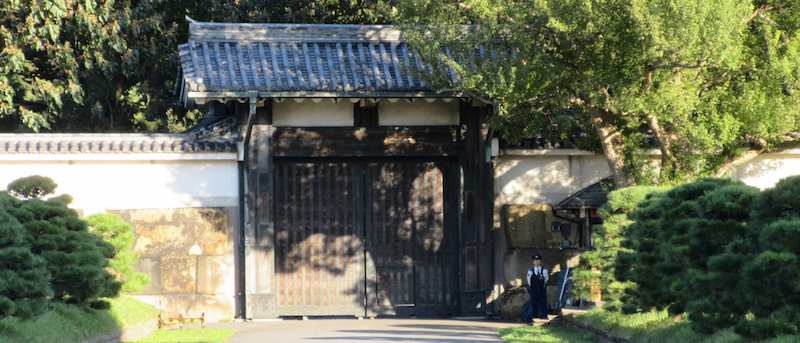
Hanzomon Gate, located on the west side of Edo Castle (now the Imperial Palace), is named after Tokugawa Ieyasu’s retainer Hattori Hanzo, the leader of the Iga ninja. Hanzo was responsible for guarding this gate and had a residence nearby.
| Item | Content |
|---|---|
| Year Built | 1620 |
| Builder | Tokugawa Shogunate |
| Structure/Features | Castle gate named after Hattori Hanzō |
| Renovation/Restoration | Unknown |
| Current Status | Existing gate |
| Destruction/Damage | Unknown |
| Cultural Property Designation | Unknown |
| Remarks | – |
🗺 Address: 1-1 Kojimachi, Chiyoda City, Tokyo
🚶 Access
Nearest station: Hanzomon Station on the Tokyo Metro Hanzomon Line, 1 minute walk (approximately 100 meters) from Exit 3b
⏳ Estimated Visit Time
- Quick visit: About 5 minutes
- In-depth exploration: About 10 minutes
📍 Highlights
- Koraimon Gate: The remaining Koraimon gate was relocated from Wada Kuramon after World War II.
- Hanzobori Moat: Surrounding the gate, the moat offers picturesque views throughout the seasons.
- Historical Landmarks: The area is home to many remnants of the Edo period.
📌 Trivia
- Unexpected Historical Significance: This gate served as an emergency escape route for the shogun in case of crisis, leading towards Kofu along the Koshu Kaido.
- A Hidden Gem: Some theories suggest its name originated from the fact that a float during the Sanno Festival was too large to pass through, requiring it to be split in half.
- Famous Figure: Hattori Hanzo, the legendary ninja, played a crucial role in Tokugawa Ieyasu’s rise to power.
Sakuradamon Gate
⭐ Recommended Rating
Historical :☆☆☆
Visual value:☆☆
Experiential:☆☆
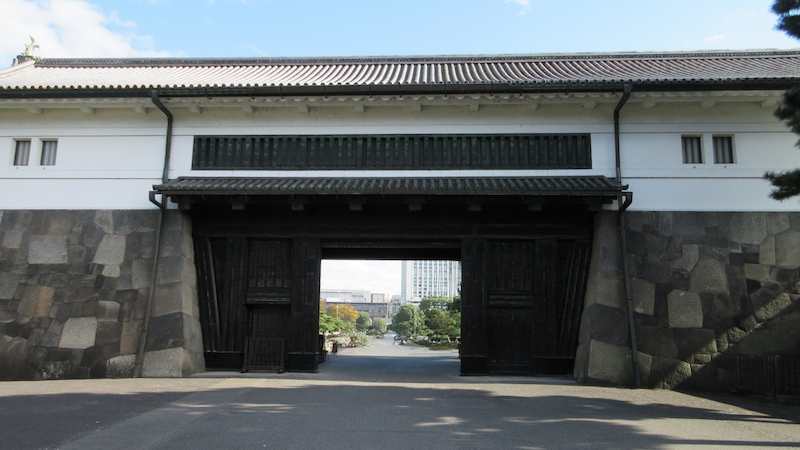
Sakuradamon Gate is one of Edo Castle’s prominent gates, historically significant both as an architectural structure and a political landmark. Built as a defensive stronghold in the southwest of Edo Castle, it witnessed the infamous 1860 assassination of Ii Naosuke, a pivotal event in Japan’s history.
Take a 360° Look Around
| Item | Content |
|---|---|
| Year Built | Circa 1620 |
| Builder | Tokugawa Shogunate |
| Structure/Features | Castle gate; site of the Sakuradamon Incident |
| Renovation/Restoration | Unknown |
| Current Status | Existing gate |
| Destruction/Damage | Unknown |
| Cultural Property Designation | Unknown |
| Remarks | – |
🗺 Address: 1-1 Chiyoda, Chiyoda City, Tokyo
🚶 Access
Nearest station: 2 minutes walk (approx. 0.2km) from Sakuradamon Station on the Tokyo Metro Yurakucho Line
⏳ Estimated Visit Time
- Quick visit: About 5 minutes
- In-depth exploration: About 15 minutes
📍 Highlights
- Sakuradamon Gate: A masterpiece of Edo-period architecture.
- Sakuradabori Moat: Offers stunning seasonal views.
- Seasonal Beauty: Cherry blossoms in spring, colorful foliage in autumn.
📌 Trivia
- Unexpected Historical Significance: Site of the assassination of Ii Naosuke.
- A Hidden Gem: A nearby quiet walking path provides a peaceful retreat from the city.
- Famous Figures: Many historical figures walked through this gate, shaping the course of Japan’s history.
Onjuku Inari Shrine
⭐ Recommended Rating
Historical :☆☆☆
Visual value:☆☆
Experiential:☆☆
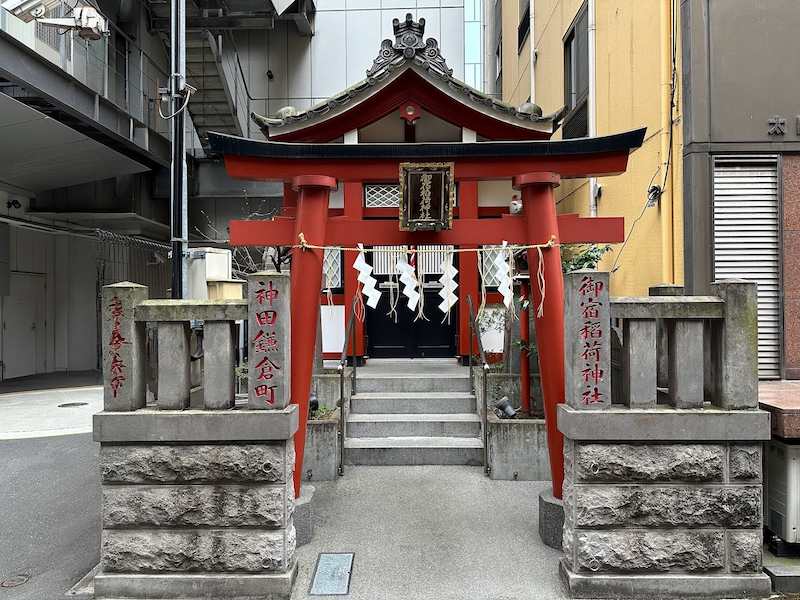
Onjuku Inari Shrine, located in Uchikanda, Chiyoda City, has its origins in the residence where Tokugawa Ieyasu once stayed when he first entered the Kanto region. The estate’s garden enshrined Ukanomitama-no-Mikoto, leading to the shrine’s foundation.
| Item | Content |
|---|---|
| Year Built | Unknown |
| Builder | Unknown |
| Structure/Features | Shinto shrine dedicated to Inari deity |
| Renovation/Restoration | Unknown |
| Current Status | Active shrine |
| Destruction/Damage | Unknown |
| Cultural Property Designation | Unknown |
| Remarks | – |
🗺 Address: 1-6-8 Uchikanda, Chiyoda City, Tokyo
🚶 Access
Approximately 7 minutes walk (approximately 500m) from Kanda Station on the JR Yamanote Line or Keihin Tohoku Line
⏳ Estimated Visit Time
- Quick visit: About 5 minutes
- In-depth exploration: About 15 minutes
📍 Highlights
- Shrine Architecture: Built in a traditional style, the shrine reflects Japan’s cultural heritage.
- Community Connection: A place of worship for locals, attracting visitors who pray for business prosperity and household safety.
- Seasonal Festivals: The shrine hosts annual events, such as New Year celebrations and summer festivals, where visitors can experience traditional customs.
📌 Trivia
- Unexpected Historical Significance: The name “Onjuku Inari Shrine” originates from Tokugawa Ieyasu’s brief stay at a local warrior’s residence during his move to the Kanto region.
- A Hidden Gem: The shrine is home to a little-known power spot, offering a serene and spiritual retreat.
- Famous Figures: Many renowned literary figures lived nearby and are said to have visited the shrine for inspiration.
Kikyo Gate (Uchisakurada-mon)
⭐ Recommended Rating
Historical :☆☆
Visual value:☆☆
Experiential:☆☆
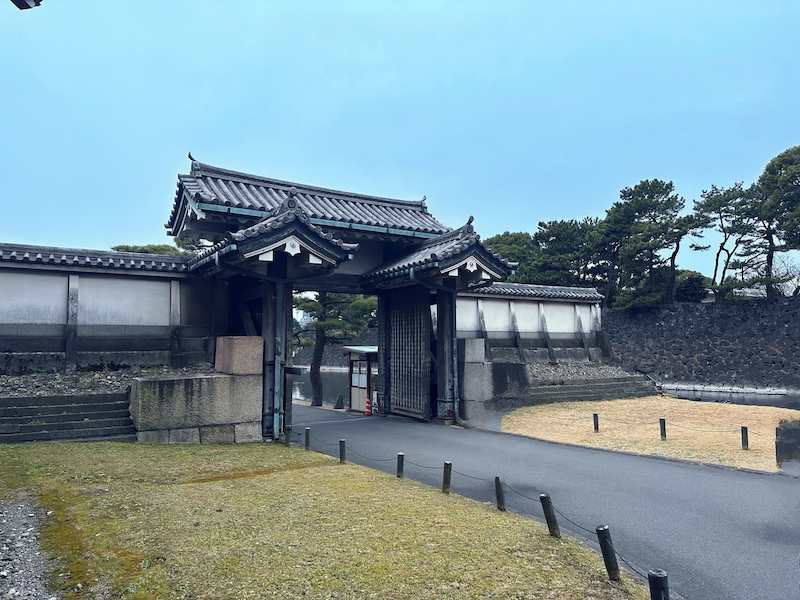
🏛 Overview
Located in Chiyoda City, Tokyo, the Kikyo Gate (also known as Uchisakurada-mon) is a historic castle gate that once formed part of Edo Castle, which was fortified by Tokugawa Ieyasu when he established the Tokugawa shogunate. Situated on the western side of Edo Castle, this gate served as a key point of entry into the castle grounds. The name “Kikyo Gate” is said to come from its shape, which resembles a bellflower (kikyo in Japanese). Today, the gate remains a popular destination for visitors interested in Japanese history and architecture.
| Item | Content |
|---|---|
| Year Built | 1614 |
| Builder | Tokugawa Shogunate |
| Structure/Features | Castle gate named after bellflower crest |
| Renovation/Restoration | Unknown |
| Current Status | Existing gate |
| Destruction/Damage | Unknown |
| Cultural Property Designation | Unknown |
| Remarks | – |
🗺 Address: 1-1 Chiyoda, Chiyoda-ku, Tokyo
🚶 Access
Nearest station: Approximately 8 minutes on foot (approximately 0.5 km) from Nijubashimae Station on the Tokyo Metro Chiyoda Line
⏳ Suggested Visit Duration
- Quick visit: Around 5 minutes
- In-depth exploration: About 15 minutes
📍 Highlights
🔹 Defensive Architecture of Kikyo Gate:
The gate features a masugata-mon design—a fortified square layout that was strategically constructed to defend against intruders.
🔹 Surrounding Stone Walls:
The stone walls around the gate are invaluable remnants that showcase the advanced castle construction techniques of the Edo period.
🔹 Seasonal Attractions:
In spring, the area around Kikyo Gate comes alive with cherry blossoms, making it a beloved spot for hanami (flower viewing).
📌 Trivia
Unexpected Historical Role:
Kikyo Gate served as a vital component in Edo Castle’s defense system and was also an exclusive entrance and exit used by the shogun.
Lesser-Known Fact:
Traces of Edo Castle’s original outer moat can still be spotted near the gate, offering a glimpse into the castle’s former grandeur.
Connection to Historical Figures:
When Tokugawa Ieyasu expanded and reinforced Edo Castle, Kikyo Gate was designated as one of its most critical structures.
Tatsumi Yagura (Southeast Turret)
⭐ Recommended Rating
Historical :☆☆
Visual value:☆☆☆
Experiential:☆☆
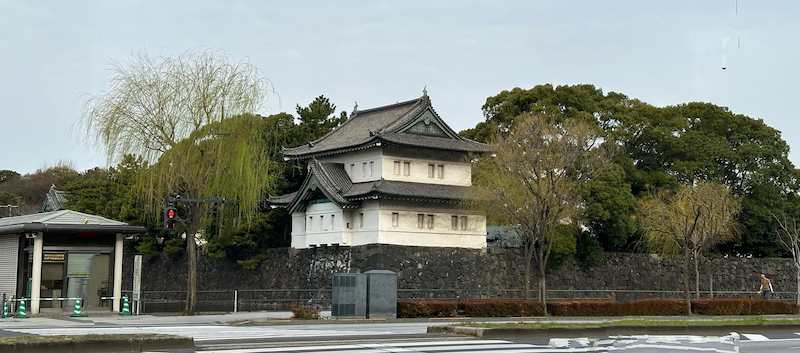
🏛 Overview
The Tatsumi Yagura, located at the southeastern corner of Edo Castle, was a vital defensive structure built during the expansion of the castle under Tokugawa Ieyasu. The name “Tatsumi” refers to the southeast direction in classical Japanese. Serving as a lookout and barrier against potential invaders, this turret played a crucial role in the castle’s security system. The Tatsumi Yagura features a striking three-story design with white plaster walls and black tiled roofs, exemplifying the architectural elegance of the Edo period. Today, it is preserved within the East Gardens of the Imperial Palace and continues to attract history enthusiasts and tourists alike.
| Item | Content |
|---|---|
| Year Built | Unknown |
| Builder | Tokugawa Shogunate |
| Structure/Features | Corner watchtower of Edo Castle |
| Renovation/Restoration | Unknown |
| Current Status | Existing structure |
| Destruction/Damage | Unknown |
| Cultural Property Designation | Unknown |
| Remarks | – |
🗺 Address: 1-1 Chiyoda, Chiyoda-ku, Tokyo
🚶 Access
Nearest station: Approximately 8 minutes on foot (approximately 0.5 km) from Nijubashimae Station on the Tokyo Metro Chiyoda Line
⏳ Suggested Visit Duration
- Quick visit: Around 10 minutes
- In-depth exploration: About 20 minutes
📍 Highlights
🔹 Exterior Design of Tatsumi Yagura:
The striking contrast between the white walls and black tiled roof beautifully captures the essence of traditional Edo-period castle architecture.
🔹 Interior Structure:
Although typically closed to the public, the interior is occasionally opened for special viewings, where visitors can admire the original wooden beams and pillars showcasing historic construction techniques.
🔹 Seasonal Attractions:
In spring, the turret is surrounded by cherry blossoms, creating a stunning visual contrast and a picturesque setting for visitors.
📌 Trivia
Surprising Historical Role:
In addition to its defensive function, Tatsumi Yagura also helped protect the shogun’s residential quarters within the castle grounds.
Lesser-Known Fact:
Some of the stones in the turret’s foundation still bear the marks and inscriptions of the stonemasons who built them, offering a tangible connection to the craftsmanship of the era.
Connection to Historical Figures:
When Tokugawa Ieyasu expanded and fortified Edo Castle, Tatsumi Yagura was constructed as one of its key defensive outposts.
Shimizu Gate (Shimizu-mon)
⭐ Recommended Rating
Historical :☆☆
Visual value:☆☆☆
Experiential:☆☆☆
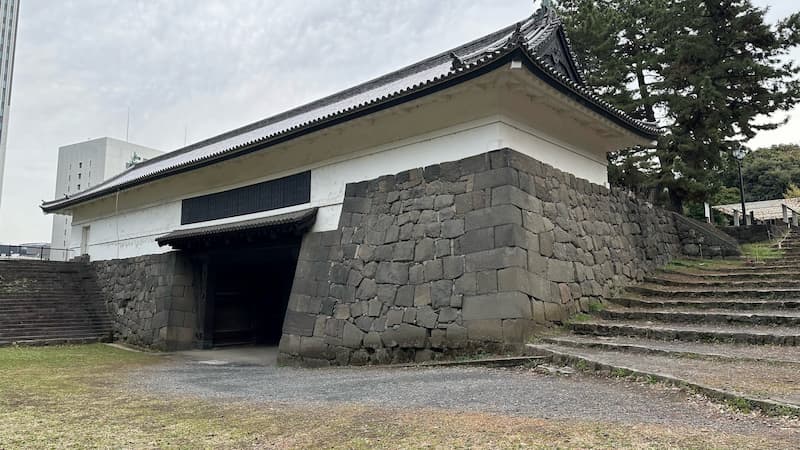
🏛 Overview
Shimizu Gate, located within Kitanomaru Park in Chiyoda City, Tokyo, is a historically significant gate of Edo Castle. Originally constructed in 1624 (Kan’ei 1) by Nagakira Asano, the first lord of the Hiroshima Domain, the gate was later destroyed in the Great Fire of 1657 and rebuilt the following year in 1658 (Manji 1). Today, the gate retains its masugata-mon (square gate) structure, consisting of a korai-mon (outer gate) and a turret gate (yagura-mon). It was designated an Important Cultural Property of Japan in 1961.
The name “Shimizu” is believed to derive from natural spring water that once flowed nearby or from an ancient temple called Shimizu-dera that once stood in the vicinity. During the mid-Edo period, Shigeyoshi, the second son of the 9th shogun Tokugawa Ieshige, established the Shimizu family within the gate’s compound, naming it after the gate itself.
Today, Shimizu Gate serves as the eastern entrance to Kitanomaru Park and remains a popular spot for tourists. Passing through the gate, visitors will find original stone steps from the Edo period, offering an authentic glimpse into the past.
Take a 360° Look Around
| Item | Content |
|---|---|
| Year Built | 1624 |
| Builder | Asano Nagaakira |
| Structure/Features | Masugata-style gate with Korai-mon and Yagura-mon |
| Renovation/Restoration | Rebuilt in 1658 |
| Current Status | Existing gate |
| Destruction/Damage | Burned down in 1657 |
| Cultural Property Designation | Important Cultural Property (1961) |
| Remarks | – |
🗺 Address: Kitanomaru Park, Chiyoda-ku, Tokyo
🚶 Access
Nearest station : 6 minutes walk (approx. 0.5km) from Exit 4 of Kudanshita Station on the Tokyo Metro Tozai Line, Hanzomon Line, and Toei Shinjuku Line
⏳ Suggested Visit Duration
- Quick visit: Around 15 minutes
- In-depth exploration: About 30 minutes
📍 Highlights
🔹 Korai Gate and Turret Gate:
Shimizu Gate’s masugata-mon layout—with both a korai-mon and a yagura-mon—preserves the classic architectural elements of Edo-period castle design.
🔹 Stone Steps:
Just beyond the gate lie stone steps dating back to the Edo period, where visitors can quite literally walk in the footsteps of samurai.
🔹 Seasonal Attractions:
In spring, cherry blossoms bloom around the gate, making it a popular hanami (flower viewing) destination.
📌 Trivia
Unexpected Historical Background:
The name “Shimizu” comes from the clear spring water once found in the area or from the long-lost Shimizu-dera temple that stood nearby.
Lesser-Known Detail:
One of the gate’s hinges is engraved with the year “1658 (Manji 1),” commemorating its post-fire reconstruction.
Connection to Historical Figures:
During the mid-Edo period, Shigeyoshi, second son of Shogun Tokugawa Ieshige, established the Shimizu family within the gate, naming it after the very structure itself.
Tayasumon Gate (Tayasu-mon)
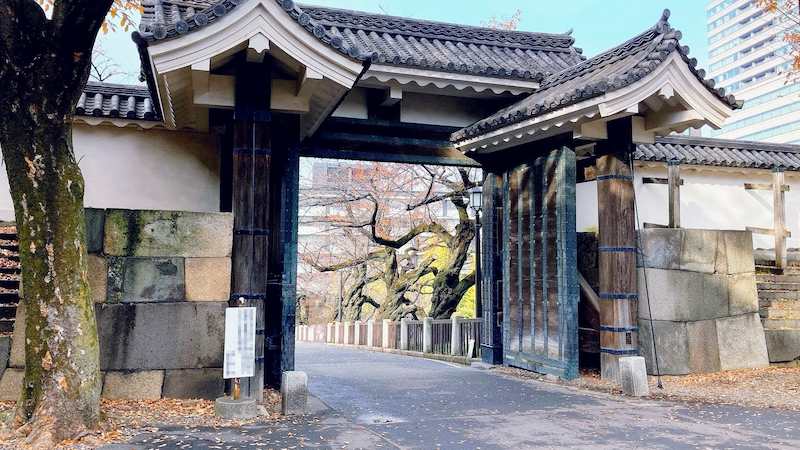
⭐ Recommended Rating
Historical :☆☆
Visual value:☆☆☆
Experiential:☆☆
🏛 Overview
Tayasumon Gate, located in Kitanomaru Park in Chiyoda City, Tokyo, is one of the oldest surviving structures of Edo Castle. Built in 1636 (Kan’ei 13), this gate features a masugata-mon (square gate) layout composed of a korai-mon (facing north) and a perpendicular turret gate (watari-yagura-mon) on its western side.
The gate’s name originates from the area’s former name, “Tayasu-dai,” where the Tayasu Daimyojin shrine—now known as Tsukudo Shrine—once stood. During the Edo period, this area, known as Kitanomaru, housed residences for high-ranking officials and retired women of the Ōoku (the shogun’s inner chambers). Notable figures such as Princess Sen (Senhime), Lady Kasuga, and Eishōin once lived here. In 1730 (Kyōhō 15), Munetake, the second son of the eighth shogun Tokugawa Yoshimune, established the Tayasu branch of the Tokugawa family here. His son, Matsudaira Sadanobu (also known as Shirakawa Rakuō), was born on these grounds.
Today, Tayasumon serves as the entrance to Kitanomaru Park and has been designated an Important Cultural Property of Japan.
Take a 360° Look Around
| Item | Content |
|---|---|
| Year Built | 1636 |
| Builder | Tokugawa Shogunate |
| Structure/Features | Masugata-style gate with Korai-mon and Yagura-mon |
| Renovation/Restoration | Unknown |
| Current Status | Existing gate |
| Destruction/Damage | Unknown |
| Cultural Property Designation | Important Cultural Property (1961) |
| Remarks | – |
🗺 Address: Kitanomaru Park, Chiyoda-ku, Tokyo
🚶 Access
Nearest station : 3 minutes walk (approx. 0.2km) from Exit 2 of Kudanshita Station on the Tokyo Metro Tozai Line, Hanzomon Line, and Toei Shinjuku Line
⏳ Suggested Visit Duration
- Quick visit: Around 15 minutes
- In-depth exploration: About 30 minutes
📍 Highlights
🔹 Korai Gate and Turret Gate:
Tayasumon features a classic masugata configuration, consisting of a north-facing korai-mon and a watari-yagura-mon that extends at a right angle to the west.
🔹 Engraved Metal Fittings:
On the door fittings of the korai-mon, visitors can find engraved names of the craftsmen involved in its creation, adding to its historical significance.
🔹 Seasonal Attractions:
In spring, the gate is surrounded by cherry blossoms, making it a popular spot for hanami (cherry blossom viewing).
📌 Trivia
Unexpected Historical Role:
The area around Tayasumon was once known as “Tayasu-guchi” or “Iidaguchi,” serving as a route toward the Jōshū (modern-day Gunma) region.
Lesser-Known Detail:
The earthen bridge in front of the gate was once used to regulate the water levels of Chidorigafuchi and Ushigafuchi moats.
Connection to Historical Figures:
In 1730, Munetake, the second son of Tokugawa Yoshimune, founded the Tayasu family here, and his son, Matsudaira Sadanobu (later known as Shirakawa Rakuō), was born within this compound.
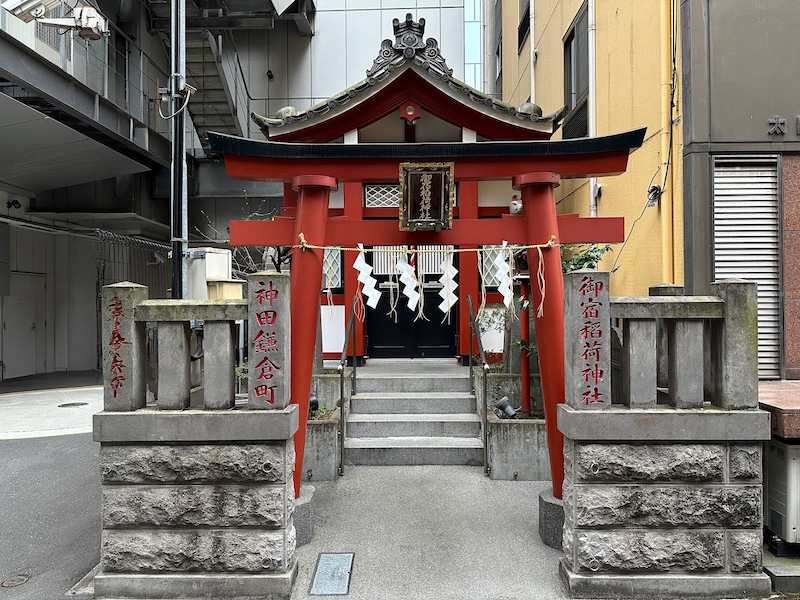


comment